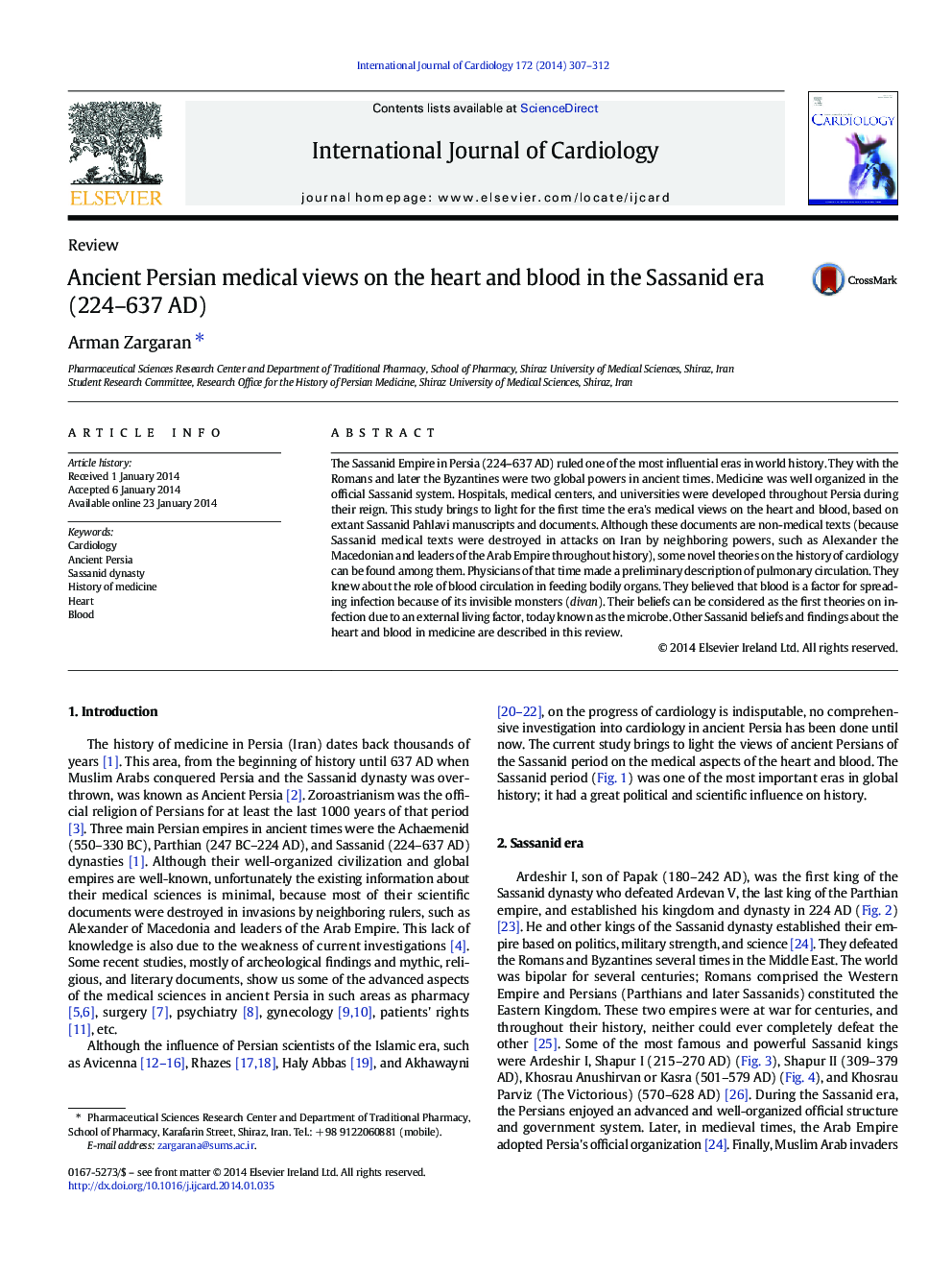| کد مقاله | کد نشریه | سال انتشار | مقاله انگلیسی | نسخه تمام متن |
|---|---|---|---|---|
| 5972008 | 1576191 | 2014 | 6 صفحه PDF | دانلود رایگان |
The Sassanid Empire in Persia (224-637 AD) ruled one of the most influential eras in world history. They with the Romans and later the Byzantines were two global powers in ancient times. Medicine was well organized in the official Sassanid system. Hospitals, medical centers, and universities were developed throughout Persia during their reign. This study brings to light for the first time the era's medical views on the heart and blood, based on extant Sassanid Pahlavi manuscripts and documents. Although these documents are non-medical texts (because Sassanid medical texts were destroyed in attacks on Iran by neighboring powers, such as Alexander the Macedonian and leaders of the Arab Empire throughout history), some novel theories on the history of cardiology can be found among them. Physicians of that time made a preliminary description of pulmonary circulation. They knew about the role of blood circulation in feeding bodily organs. They believed that blood is a factor for spreading infection because of its invisible monsters (divan). Their beliefs can be considered as the first theories on infection due to an external living factor, today known as the microbe. Other Sassanid beliefs and findings about the heart and blood in medicine are described in this review.
Journal: International Journal of Cardiology - Volume 172, Issue 2, 15 March 2014, Pages 307-312
